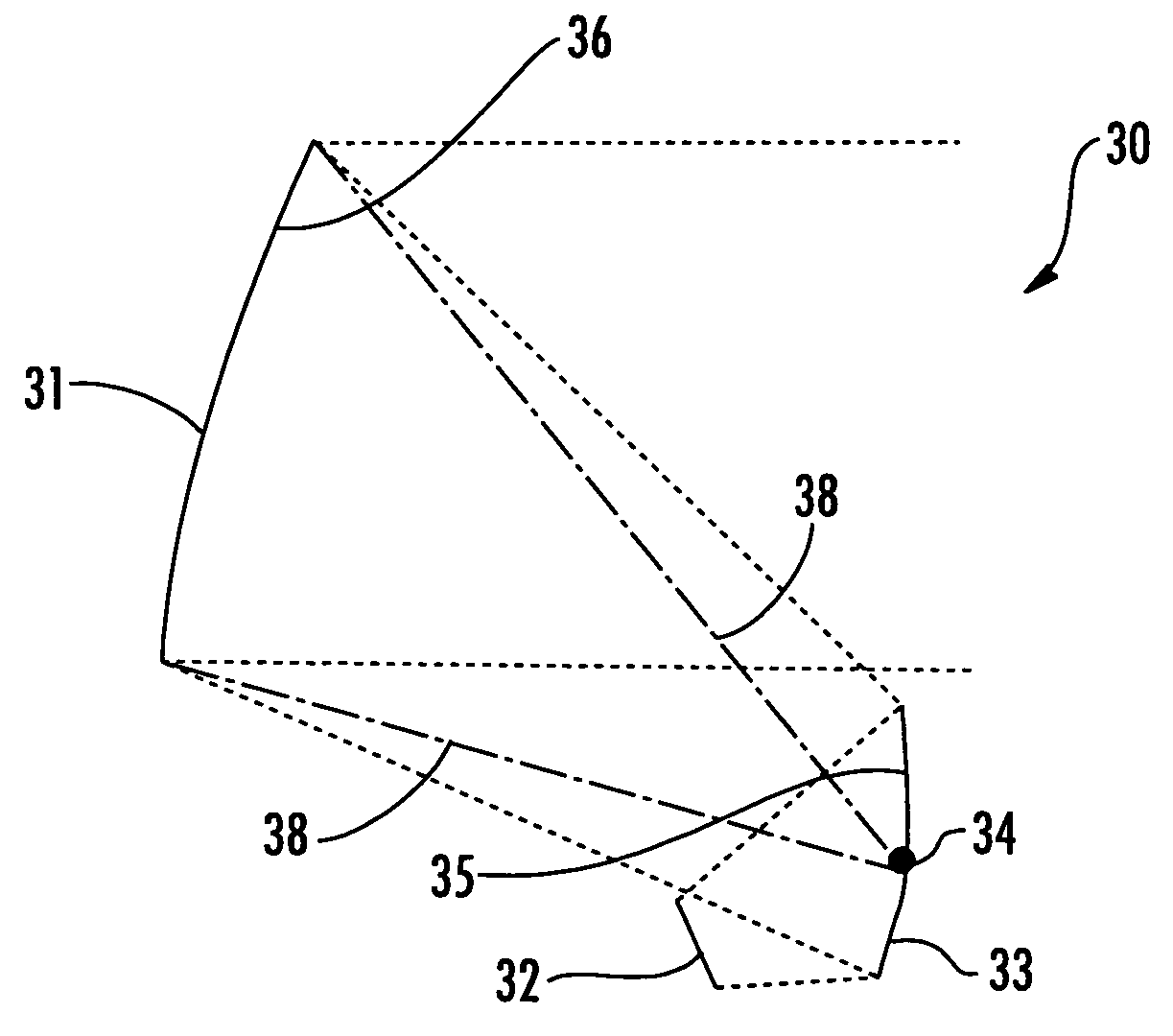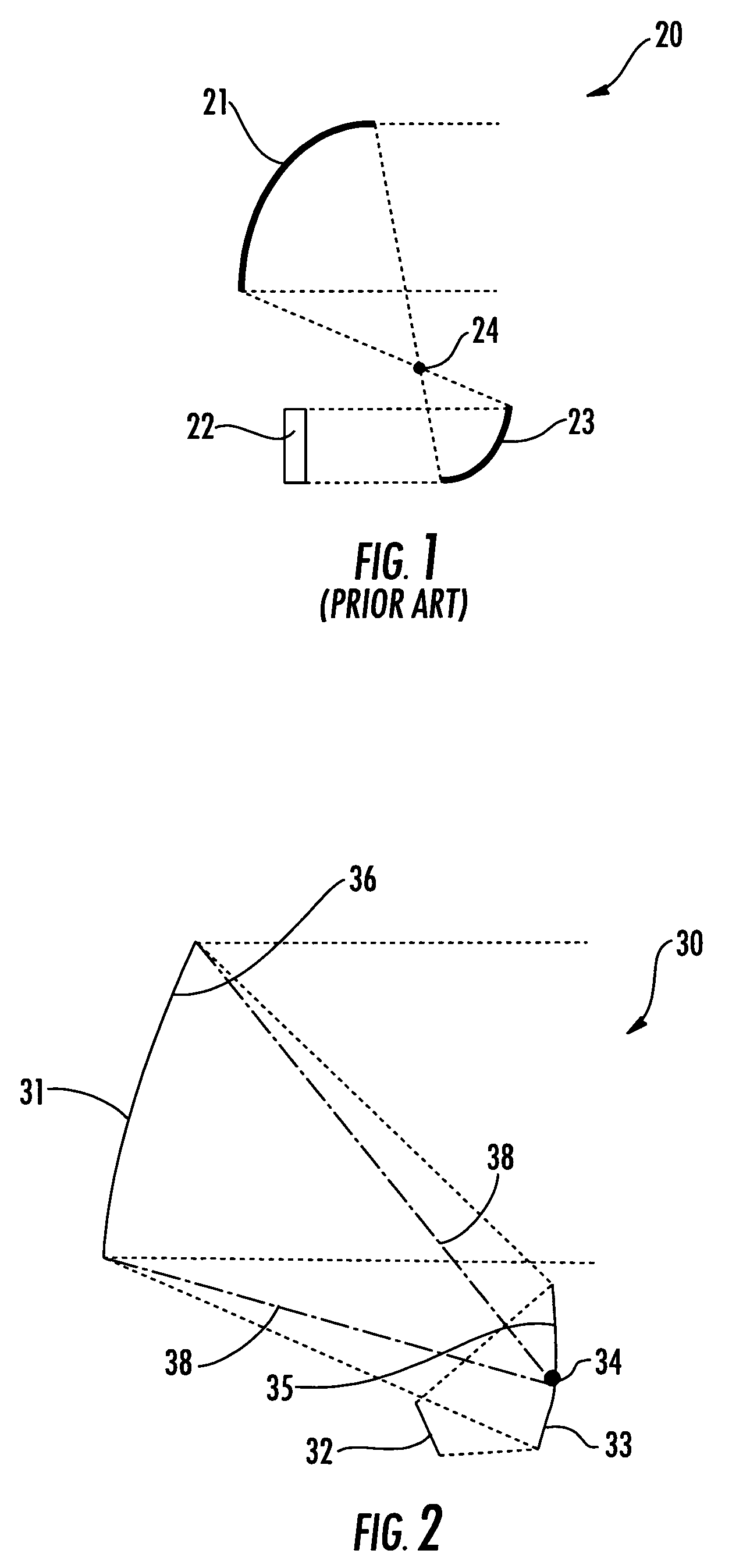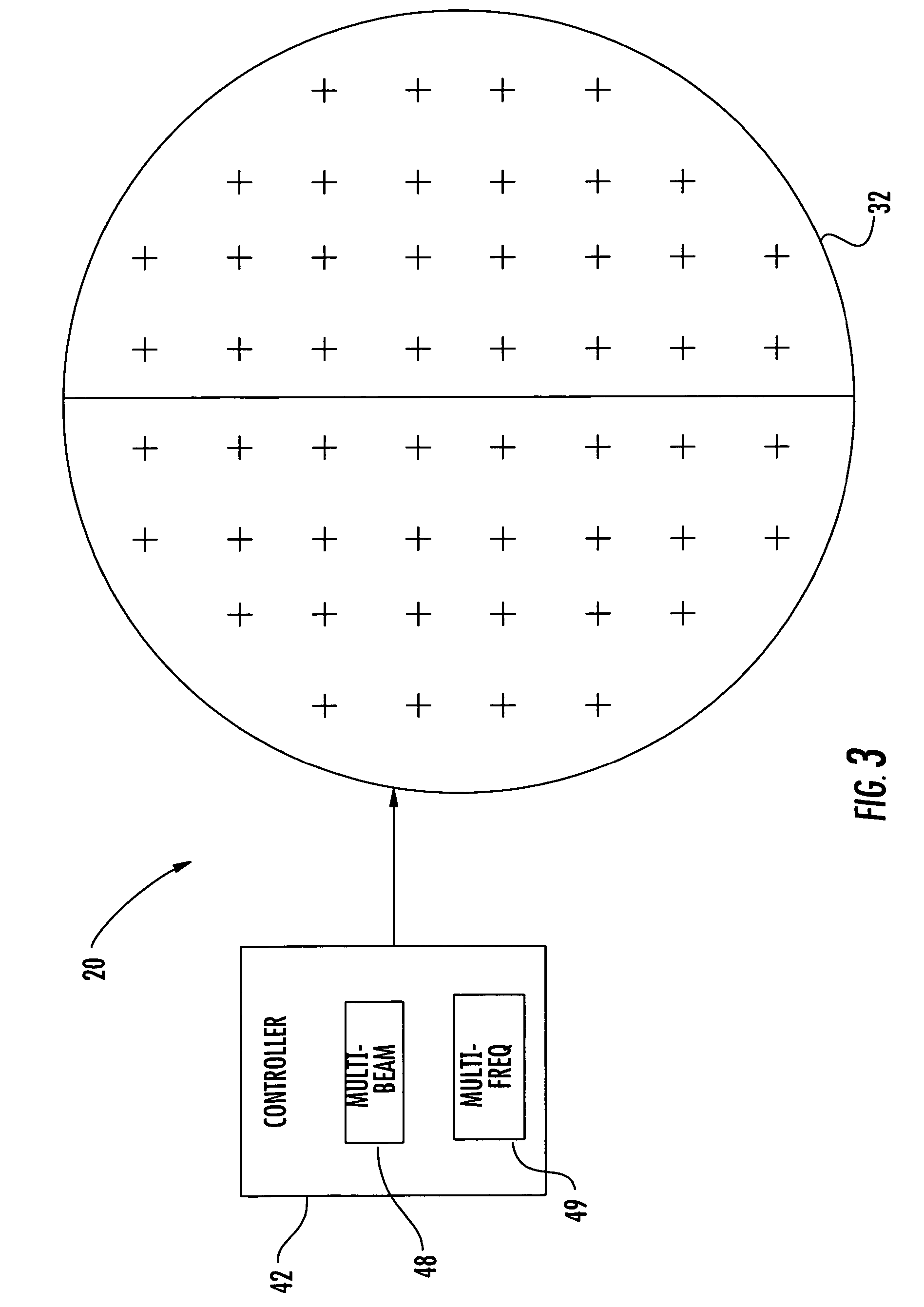Dual reflector antenna and associated methods
a dual reflector and reflector technology, applied in the field of antennas, can solve the problems of reduced beam gain, mechanical complexity of system b>20/b>, distorted beam shape, etc., and achieve the effect of low beam distortion and high feed utilization
- Summary
- Abstract
- Description
- Claims
- Application Information
AI Technical Summary
Benefits of technology
Problems solved by technology
Method used
Image
Examples
Embodiment Construction
[0028]The invention will now be described more fully hereinafter with reference to the accompanying drawings, in which preferred embodiments of the invention are shown. This invention may, however, be embodied in many different forms and should not be construed as limited to the embodiments set forth herein. Rather, these embodiments are provided so that this disclosure will be thorough and complete, and will fully convey the scope of the invention to those skilled in the art. Like numbers refer to like elements throughout, and prime and multiple prime notation are used to indicate similar elements in alternate embodiments.
[0029]The antenna system 30 according to the invention is now described with reference to FIGS. 2 and 3. The antenna system 30 includes an antenna feed 32. A subreflector 33 is aligned with the antenna feed 32 and has a concave surface 35 defining a vertex 34. A main reflector 31 having a concave surface 36 is aligned with the subreflector 33 to define an offset a...
PUM
 Login to View More
Login to View More Abstract
Description
Claims
Application Information
 Login to View More
Login to View More - Generate Ideas
- Intellectual Property
- Life Sciences
- Materials
- Tech Scout
- Unparalleled Data Quality
- Higher Quality Content
- 60% Fewer Hallucinations
Browse by: Latest US Patents, China's latest patents, Technical Efficacy Thesaurus, Application Domain, Technology Topic, Popular Technical Reports.
© 2025 PatSnap. All rights reserved.Legal|Privacy policy|Modern Slavery Act Transparency Statement|Sitemap|About US| Contact US: help@patsnap.com



